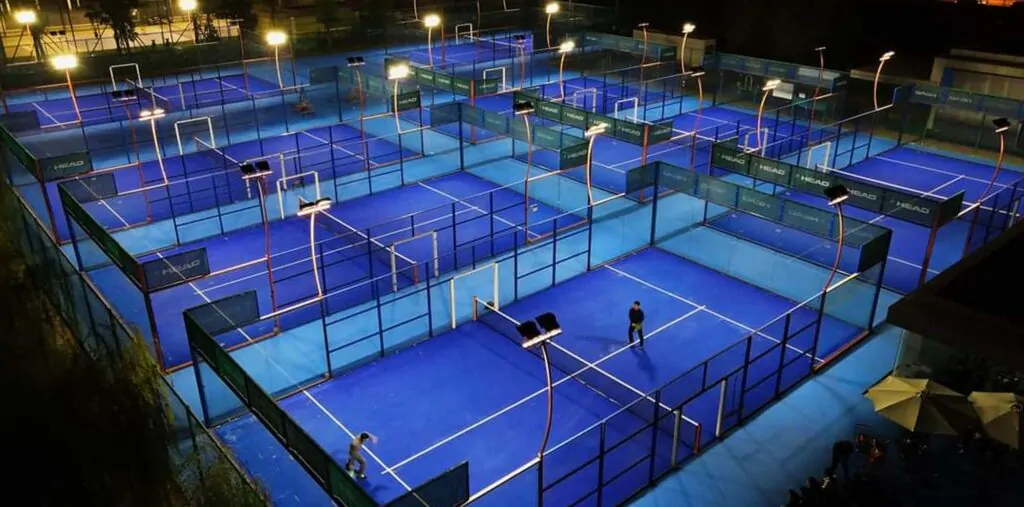Padel, a sport that has rapidly gained popularity over the past few years, has left many wondering, “What is padel?” This unique and exciting game is an intriguing blend of tennis and squash, offering players a dynamic, fast-paced experience. In this comprehensive article, we will explore the origins of padel, its rules, gameplay, and reasons behind its meteoric rise. By the end, you’ll have a thorough understanding of what padel is and why it has captured the hearts of so many.
The Origins of Padel: A Brief History
How it All Began
Padel traces its roots back to 1969 when it was invented by Enrique Corcuera, a wealthy Mexican businessman. Corcuera created a new sport by adapting the rules of tennis to fit his home’s limited space. He built the first padel court in his backyard, which featured walls that players could use to their advantage during gameplay. Soon after, the sport spread to Spain and Argentina, where it gained significant popularity.

Padel’s Expansion and Growth
Over the years, Padel has spread across Europe, the United States, and other parts of the world. It has become especially popular in Spain, where it has grown to be the second most practiced sport, only surpassed by soccer. The sport’s rapid expansion can be attributed to its accessibility and the increasing number of padel clubs and facilities worldwide.
What is Padel? Understanding the Basics
The Court
Padel is played on a smaller court than tennis, measuring 20 meters in length and 10 meters in width. The court is enclosed by walls on all sides, with the back walls featuring a combination of wire mesh and glass. The walls serve a dual purpose: they provide a unique gameplay dynamic, and they also protect players from potential injuries due to high-speed balls.

The Equipment
Padel is played with a solid racket, typically made from composite materials like carbon fiber or fiberglass. Unlike tennis rackets, padel rackets have no strings and contain holes for air resistance. The ball used in padel is similar to a tennis ball, but with slightly less pressure.
The Rules
Padel rules share some similarities with tennis, but there are key differences. Matches are played in doubles, with teams of two players on each side. Scoring follows the same system as tennis, with points progressing from 15 to 30, then 40, and finally game point. A set is won when a team reaches six games, with a two-game advantage required. If the score reaches 6-6, a tiebreaker is played to determine the set winner.
The most significant difference between padel and tennis lies in the gameplay. In padel, the ball is allowed to hit the walls, creating unique playing strategies. The ball must bounce on the ground before hitting the wall, and players are not allowed to hit the ball directly into the opposing team’s wall.
The Appeal of Padel: Why This Sport is Winning Hearts
Accessibility and Learning Curve
One of the primary reasons behind padel’s popularity is its accessibility. The sport’s rules and gameplay are easy to understand, making it an ideal option for people of all ages and skill levels. The learning curve for padel is significantly less steep than sports like tennis or squash, allowing newcomers to quickly enjoy the game and experience a sense of accomplishment.
Padel offers a social and fun atmosphere that encourages interaction among players. As it’s played in doubles, teamwork and communication are essential, fostering camaraderie and connection between teammates. Padel clubs often host events and tournaments, further enhancing the sport’s social aspect and providing an opportunity for players to meet and bond with others who share their passion.
Health Benefits and Exercise
Like any physical activity, padel provides numerous health benefits. It’s an excellent cardiovascular workout that helps improve endurance, agility, and coordination. Additionally, padel engages various muscle groups, contributing to overall physical fitness and strength. The sport’s fast pace and dynamic nature make it an enjoyable form of exercise, encouraging players to maintain an active and healthy lifestyle.
The Thrill of Strategy and Competition
Padel’s unique gameplay involving walls adds an extra layer of strategy and skill, captivating players and spectators alike. The sport demands quick thinking, adaptability, and the ability to anticipate opponents’ moves. Padel tournaments and competitions offer an exhilarating challenge for those seeking to test their skills and enjoy the thrill of friendly competition.
Tips for Padel Beginners: Starting Your Journey
Now that you know what padel is, you might be eager to give it a try. Here are some helpful tips for beginners to make the most of their padel experience:
Choose the Right Equipment
To begin playing padel, you’ll need a padel racket and balls. When selecting a racket, consider your skill level and personal preferences. Beginners should opt for a lighter racket with a larger sweet spot, as it provides better control and easier ball handling. As for balls, choose padel-specific balls designed for optimal performance on padel courts.
Learn the Basics
Before stepping onto the court, familiarize yourself with the basic rules and scoring system of padel. Understanding the fundamentals will help you enjoy the game and improve your skills more quickly. Many padel clubs offer introductory lessons or coaching sessions for beginners, so take advantage of these opportunities to learn from experienced players or coaches.
Master the Wall
One of the most challenging aspects of padel for newcomers is learning how to effectively use the walls during gameplay. Practice different shots, such as volleys, lobs, and smashes, incorporating the walls to create unique angles and strategies. As you become more comfortable with the wall, your game will significantly improve, and you’ll be better equipped to handle advanced tactics from your opponents.
Develop Your Court Awareness and Positioning
Good court positioning is crucial in padel. Focus on maintaining a balanced position with your partner, covering your respective sides of the court. Communication is key – talk to your partner, call out shots, and provide support to ensure you’re both working effectively as a team.
Enjoy the Process and Have Fun
As a beginner, it’s essential to remember that improvement takes time and practice. Be patient with yourself, and don’t forget to have fun while playing. Embrace the learning process and enjoy the social aspect of padel. As you continue to play and gain experience, you’ll find your skills developing and your love for the sport growing.
The Future of Padel: A Sport on the Rise
With its ever-increasing popularity, padel is poised to continue its rapid expansion across the globe. As more people discover the excitement and appeal of this unique sport, we can expect to see a surge in padel clubs, facilities, and tournaments. Padel’s accessible nature and captivating gameplay make it an ideal sport for players of all ages and backgrounds, contributing to its enduring appeal.
As the sport of padel continues to evolve and innovate, we can look forward to new developments and milestones that will further establish padel as a major player in the world of sports. So, whether you’re already a padel enthusiast or just beginning your journey, there’s never been a better time to dive into the world of padel and experience the thrill of this rapidly growing sport.
Frequently Asked Questions about Padel
- What is padel’s relationship with tennis and squash?
Padel is a unique sport that combines elements of both tennis and squash. It shares similarities with tennis in terms of scoring, equipment, and court layout. However, the gameplay more closely resembles squash, with the addition of walls that players can use during the game. - Can I play padel singles, or is it strictly a doubles sport?
While padel is predominantly played as a doubles sport, there are modified versions of the game that allow for singles play. However, these formats are not as popular or widespread as traditional doubles padel. - Is padel suitable for children?
Yes, padel is an excellent sport for children, as it’s easy to learn, safe, and encourages teamwork and social interaction. Many padel clubs offer classes and coaching for children, making it a popular choice for young athletes and families. - How can I get started with padel?
Getting started with padel is simple. First, find a local padel club or facility where you can rent a court and equipment. Many clubs offer introductory classes or coaching sessions for beginners. As you gain experience, consider investing in your own padel racket and joining a club to participate in social events and competitions.
Conclusion: Discover the World of Padel
So, what is padel? Padel is an exhilarating sport that combines elements of tennis and squash, offering players a unique and engaging experience. With its rich history, accessible gameplay, and captivating strategies, it’s no wonder padel has captured the hearts of sports enthusiasts worldwide. As padel continues to grow in popularity, more and more people will undoubtedly be drawn to its exciting, social, and fitness-promoting aspects. Whether you’re a seasoned racket sports player or a complete beginner, padel is a sport worth exploring.





